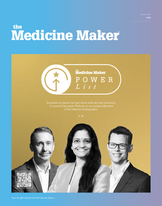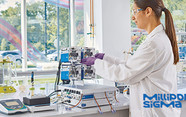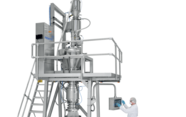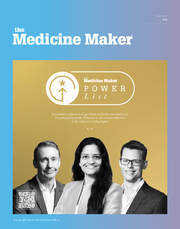UK Launches Seven New Centres for Regulatory Science and Innovation
A regulatory science push in the UK includes centres for digital transformation, AI and more.
Stephanie Vine | | 3 min read | News

Seven institutes in the UK have been selected to receive funding from a partnership between Innovate UK, the Medicines and Healthcare products Regulatory Agency (MHRA), Office for Life Sciences, and Medical Research Council. Each institute will establish a ‘centre of excellence’ in a specific area connected to regulatory science, with the goal of driving regulatory policy and practice.
“Regulation has the power to accelerate innovation by providing confidence to innovators, certainty for investors and boosting consumer trust,” says David Pickard, Innovation Partnerships Executive at Innovate UK. “Innovate UK’s UK Regulatory Science and Innovation Networks programme is a key initiative designed to harness the power of regulatory science to generate evidence and insights that inform regulatory policy and practice.”
Seventeen networks initially received funding in a discovery phase to ‘explore bold ideas, build relationships and develop their proposals.’ The final seven chosen for the next phase of the project, implementation, are:
- Digital Transformation of Medicines Development and Manufacturing, led by the University of Strathclyde, to accelerate the adoption of digital tools in medicine development.
- The UK Regulatory Innovation Network for Advanced Therapies, led by the Cell and Gene Therapy Catapult, to streamline regulation of Advanced Therapy Medicinal Products.
- Regulatory Science Empowering Innovation in Transformative Digital Health and AI, led by Brunel University, to safely maximize the potential of AI-powered healthcare solutions.
- Centre of Excellence on In-silico Regulatory Science and Innovation, led by the University of Manchester, to integrate evidence from computational models into the regulatory process.
- Clinical Evaluation & Assessment for Regulation of Diagnostic tests, led by Psephos Ltd, to help create safe availability of diagnostic tests for patients.
- Centre of Excellence for Regulatory Science and Innovation in AI & Digital Health Technologies, led by the University of Birmingham, to optimise the regulation of AI and digital healthcare technologies to ensure innovations are safe and effective for patients.
- Centre for Excellence in Regulatory Science and Innovation in Pharmacogenomics, led by the University of Liverpool, to develop guidelines for using pharmacogenomics in practice, and attract further investment in this area.
All seven of the Centres of Excellence for Regulatory Science and Innovation (CERSIs) have been asked to plan for long term viability, and will need to create outputs including events, reports, and workshops, as well as being expected to work with UK regulators and policy makers on their findings.
“One of the unique aspects of the UK is the way in which regulators such as the MHRA are working with research funders like MRC and Innovation funders like Innovate UK to tackle the challenges ahead. All of these agencies, as well as other parts of the government, are keen to discover more about what policy makers and regulators can do to promote innovation and growth,” said Pickard. “The areas selected for the centres of excellence emerged as the major themes from the discovery phase, rather than being specifically requested or mandated in the competition. It could reflect that these are the areas in which a lot of innovation is occurring and that, to some extent, the regulators are having to keep pace with the advances in technology.”
In addition to the CERSI’s that have been announced, there has also been an announcement for funding eleven projects under the banner of Regulatory Science and Innovation Networks (RS&IN). These will cover a range of non-human health areas, but there may be crossover with the work in the human health sector, particularly in areas such as sustainability, and on policy approaches and gathering evidence of the success of different applications.

Making great scientific magazines isn’t just about delivering knowledge and high quality content; it’s also about packaging these in the right words to ensure that someone is truly inspired by a topic. My passion is ensuring that our authors’ expertise is presented as a seamless and enjoyable reading experience, whether in print, in digital or on social media. I’ve spent fourteen years writing and editing features for scientific and manufacturing publications, and in making this content engaging and accessible without sacrificing its scientific integrity. There is nothing better than a magazine with great content that feels great to read.



















